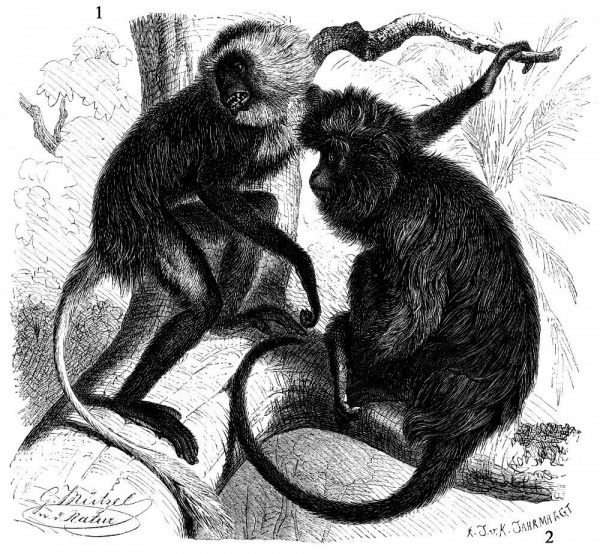Facts About Black colobus
The black colobus, sometimes dramatically referred to as the satanic black colobus, is an impressive Old World monkey native to western central Africa. These large monkeys are entirely covered in black fur and, like other Colobus monkeys, lack thumbs. Unfortunately, their population has declined due to habitat destruction and hunting, resulting in their classification as Vulnerable on the IUCN Red List.
Interestingly, the black colobus is the oldest species within the Colobus genus. There are two subspecies: the Bioko black colobus (Colobus satanas satanas) and the Gabon black colobus (Colobus satanas anthracinus). The name "Colobus" derives from the Greek word for 'mutilated', reflecting their missing thumbs, while 'satanas' translates to 'the accuser' or 'the devil' in Greek.
These monkeys have a sleek, slender build, with their bodies measuring between 50 and 70 cm in length, and their tails extending up to 80 cm. Males weigh between 10 and 15 kg, while females are slightly lighter at 10 to 11 kg. Their black fur is uniform, with no white markings, and they have distinctive ischial callosities on their rumps. Black colobus monkeys are arboreal, inhabiting dense rainforests and avoiding human-populated areas.
As herbivores, black colobus monkeys consume a diet of seeds, leaves, flowers, buds, and unripe fruits. They are essential for seed dispersal and possess a unique digestive system that allows them to process tough leaves. These monkeys live in groups with multiple males, are territorial, and communicate with distinctive vocalizations. They are diurnal, spending a significant amount of time resting and foraging.
Reproduction in black colobus monkeys does not follow a strict seasonal pattern. Females typically give birth to one infant after a gestation period of about 195 days. The mother carries the young, which learn social behaviors from the group.
Unfortunately, these monkeys face severe threats from habitat loss and hunting for bushmeat. Conservation efforts are underway to protect the black colobus and prevent them from edging closer to extinction.

 Gabon
Gabon